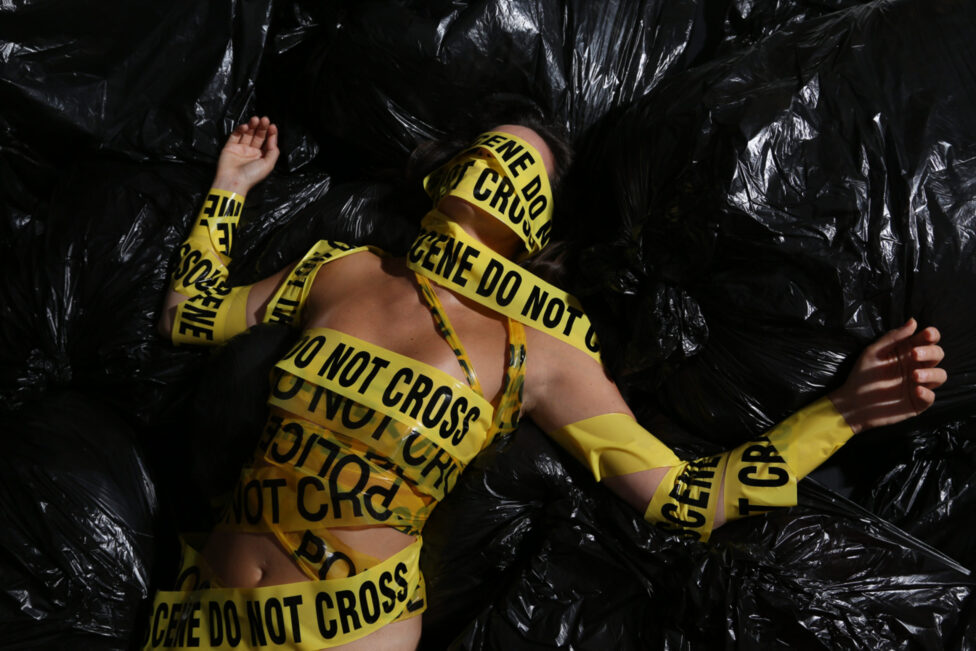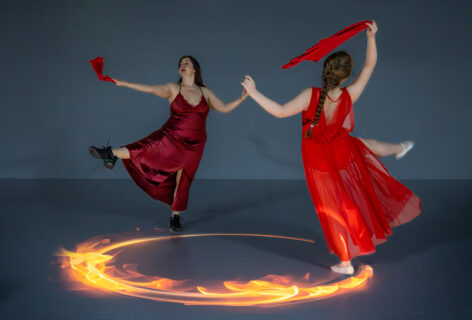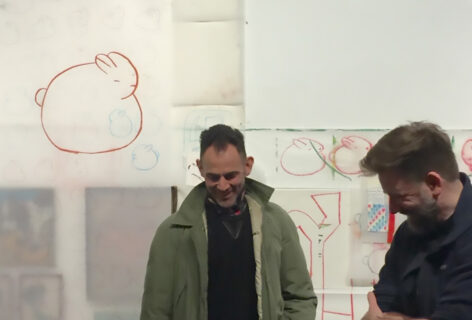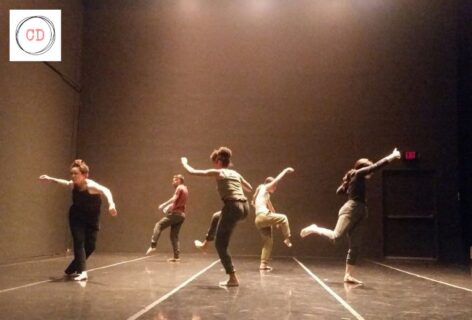I always had this huge question about how to create work and why, and my body being my main tool, I had to recognize what is written in it whether I want it or not. I’m very interested in how other people are creating; how friends of mine from my home country make work, dance or tell their stories in any ways that are appealing to them. In this reality, we share. I learn a lot, and many ideas arise in exchanges like this. I also like to share ways I found of letting go, moving forward and relaxing into my reality. This way creating work is just inevitable, many times not easy at all, but there is a certain place in the heart it comes naturally, we just have to adjust the form sometimes.
We realized we found the culture of our homeland in our bodies. Have you ever felt this way? Have you noticed stereotypes in your bodies and movements?
Fabiana Castro: Yes, I really find myself a Brazilian woman out of Brazil. After leaving Brazil, I can discover this Brazilian body, this way of moving, this way of speaking, a way of touching people, this freedom we have, this affection that is mistaken by cordiality and with permission, sometimes, for being a woman. We talk and touch people and then when realize that you do not receive a response a Brazilian would give, that would be cool, right? Then you realize you are not in the same place or that you don’t have the same upbringing and you start discovering how you are as you arrive somewhere else. So I arrived here [Buenos Aires, Argentina], speaking very little Spanish, around then I had the impression that I don’t have a suitable head to speak this language, I speak another language. I started teaching Portuguese and I understood way more about my language. So my Brazilian body was creating itself with the need of working here, of communicating here, of creating vocabularies here, inside their language. But I always needed to gesticulate everything. Each universe I was about to go in I had to make gestures for things, so if I wanted to sew, if I wanted to knit, if I wanted to teach movement classes, dance classes and all of this, to each thing, each world that we enter there is a huge vocabulary. The silences I had to be in, in order to understand them, in order to learn the language, this was showing my Brazilian body. And I was falling in love so much with Brazil and I was understanding myself as a Brazilian out of Brazil. I’m sure all of us relate with what I’m talking about, right? Discovering yourself and discovering the particularities of your place. This is very beautiful. I feel touched every time I think about this. The saying: when you lose something is when you value it, is something we hear a lot in Brazil. Being away and wanting to go back I have a longing I never imagined having.
Flávia Tápias: I identify myself so much with what Fabiana said. When I left Brazil, I went through a process of feeling a lack of identity. An incessant search for belonging to something. Then I felt I don’t identify myself with anything, I don’t belong. Suddenly inhabiting the emptiness of this place made me recover and have a very sensitive perception of my Brazilian body, of my construction as a Brazilian woman, as a Brazilian human being. Whatever it was that I thought I needed to belong, I already had. When I left Brazil, Brazil entered me but I was also able to see what was already inside and become sensitive to my identity.
Andressa Furletti: I agree with a little bit of all that, but I have a different story. I didn’t come here [Brooklyn, NY] to stay, I came to stay for one year, and this one year became twelve. When I arrived here I had this idea that it was temporary. So I never disconnected myself from Brazil, from the culture, from the people. I came here like that. As a teenager I identified with Brazilian culture through music and that generated a very big interest in everything Brazilian really. I came here with this very strong connection already. So when I was studying here I was like oh, I want to stage a Brazilian play, instead of a play from here and so forth. So I was still very connected. And this became very clear as an outsider being in a different environment. It’s not like I discovered Brazilian culture, but I could sense it very strongly. I remember an acting exercise we did once in class. Each person would walk and everyone else had to copy that way of walking. It really caught my attention. Everyone who walked like me was wiggling a lot [the hips from side to side, in Portuguese there is a very common verb for this: rebolar] and I said “Wow, I don’t have this view of myself like that. I don’t think I walk like that!” But in comparison to how everyone walks, I realized that everything was different. That the pelvis is tight. I never saw myself like that. So I noticed my “Brazility” very strongly. Sometimes Americans joke about it, when they are imitating us, we talk with our hands a lot, we gesticulate a lot, right?
KR: Yes, I just wrote it down “Brazilian gestures”…
AF: Yes, when we talk, the whole time the hand is talking too. It’s these things you guys mentioned about the difficulty of the language: when you arrive and you haven’t mastered the language, the body is even more animated. There were times I felt like a cartoon because I was miming what I was saying to try to be understood. So there is a lot of the noticing, right? And I would not necessarily call them stereotypes. And that’s what is common among Brazilians. I’m not quite sure what “that” is, but there is something in the corporal score that I rarely miss. I see people walking far away on the street and I say, “Brazilian!” and rarely I err. There is something in the look, an energy, a thing, a rhythm, I don’t know. So having left Brazil gave me this perception. Like my accent, in BH [Belo Horizonte, Minas Gerais, Brazil] we think we don’t have an accent. When I left there to live in Rio, that’s when I realized my accent.
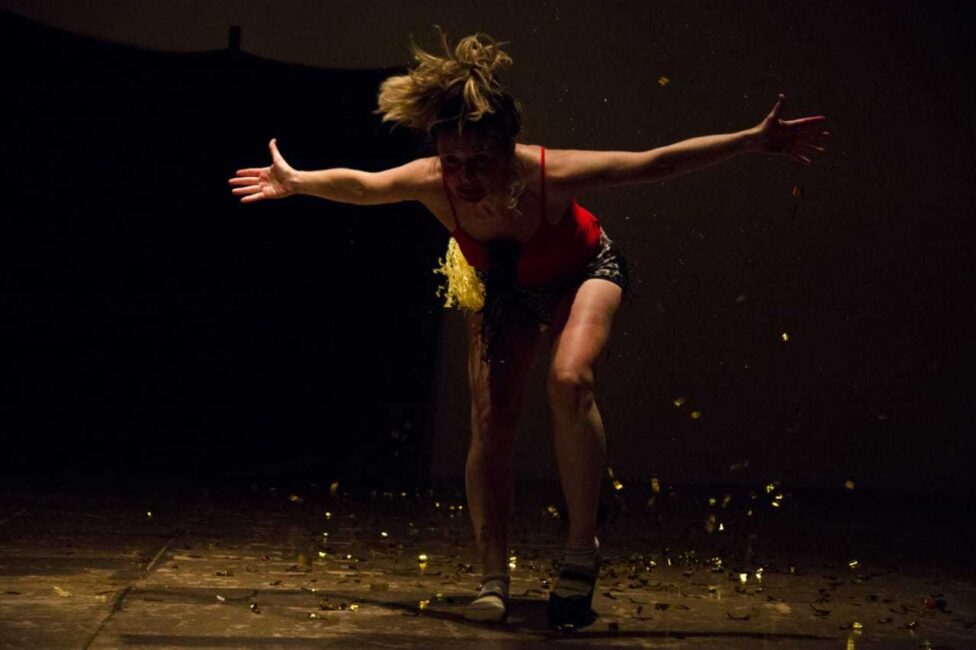
photo by Flávia Rossi Tápias
FT: I’ve also been through moments when I felt like a foreigner everywhere, including Brazil. And that was a very strong moment when I realized that I also don’t identify with many things in Brazil. Actually here I have Ukrainian accent, people say I’m from Ukraine. In Brazil I would go into stores and people would say “Where are you from?” I spoke differently, in a stiff way. Because I wanted so badly to make myself understood here that I acquired another rhythm. I also had a moment where I felt l’m a foreigner here, but I’m also a foreigner there. I was dwelling in this place of suspension.
FC: Yes, in the end we really stay in this place of suspension because our friends have already forgotten about us, you know? We don’t have that many houses to stay, there are about two little houses that receive us, that really receive, right? [laughs]
Do you think the way we behave, we move, dance, and talk is something Brazilian women have in common only for being Brazilian women or not? For being Latinas? Or simply women?
KR: I wanted to ask Flávia, in relationship to having lived in Mexico, if you see this in other women from South America and Latin America, or if it’s something more related to Brazil. Because my guess is that it’s Brazilian. There is something Brazilian there that is different from other Latinas.
FT: I think there is a singularity. I’m not sure if non-Brazilian people notice it. It could be the case that someone sees something similar in a Colombian woman, for example, in terms of gesture, or swing of the body, or the sizes of bodies, of the bones. But it’s something peculiar about the Brazilian woman. I felt that in Mexico and here too.
FC: Brazil is a very diverse place because there are people from everywhere in South America. It’s easy to immigrate here. Afterwards everything that is subjective is complicated, but bureaucratically, it’s easy. So many people from Latin America are here and when we work with Brazilian dance on Latin-American bodies, it’s completely different how they absorb the dance from how we do it. The Brazilian body really has a specificity, without speaking about value or quality. Without going into this scope, we can observe a difference.
FT: It’s a characteristic, not judging it good or bad, but as a characteristic of movement that is very unique.
FC: Even in the dances, popular dances, couples dance, ballroom dance. [In Buenos Aires] we have Tango, Chacarera, and even Candombe that is very close to Samba, they are all very different. We are always very close together, we are always cuddling. The pelvis is very close together. Here, there is a real distance. They have the chest close together and the pelvis very far away. And the Chacarera is from far away, looking with a kind of charming look. So we allow ourselves to touch a little more. The Brazilian people, even though they are so misogynist… that’s a different theme, right?
FT: This wiggly pelvis thing, we have this wiggly pelvis thing.
AF: It’s very difficult to generalize Latin America, because it’s a continent. There are different countries and each country has their own culture and their own ancestrality. Brazil too. We had a different kind of colonization that contrasts a little with the rest of Latin America. The fact we are predominantly a Portuguese culture instead of Spanish culture because of Portuguese colonization. Of course it gets mixed with other things but the Portuguese has another language and all. It’s difficult to generalize but we talk loud, but that is something we see in other Latin-American countries. But, being a bit more specific, we know, inside Brazil the women are different. If you think about South, Southeast, North, Northeast, they are different women with different strengths, different voices, different intonations, different positioning. Maybe it’s difficult for American people to see this difference but I just wanted to mention this difference that exists inside of the country itself, in regions. If we compare women from Sao Paulo with women from Recife, they are very different people.
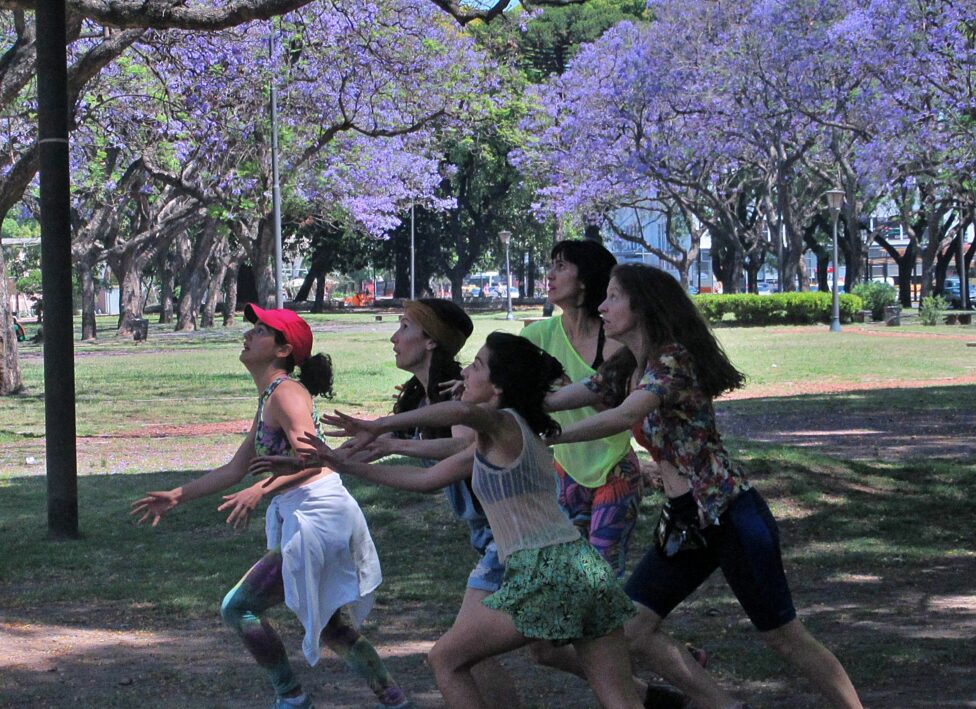
A Matriarch’s Flower, photo by Fabiana Castro
KR: I also think that social class determines a lot also in Brazil, doesn’t it? In the US, in my observation, if you go to a very touristic place, like a place for shopping in Manhattan, they recognize our accent even when it’s very subtle, even when we have been living here for a long time, and we worked on it a lot already, they recognize us as Brazilian and they don’t treat us very nicely. Normally Brazilian people who come here to shop are very rude and there is a pejorative connotation there. Now, if you are here in Brooklyn, where we are now and you say you are Brazilian anywhere, which is a much less touristic place, they have open arms.
AF: It’s a party, right?
KR: It’s a party. The West Indian culture from Central America, for example, they all identify themselves with us. They have something like Carnival, that is a party they have too. I will say the other questions and we can dance between them…
How has violence, patriarchy, and abuse shaped us? And how has the distance from home given us another perspective about what we think about ourselves and how we move?
KR: And let me say the next one as well, so we know what they are:
How to move forward, how to understand and use wisely what we have or what we are?
KR: This question goes a little bit further, but the other one touches on this subject of patriarchy and abuse, I don’t know about Andressa, but myself, Nina, Flavia and Bia all have that in common and also many other women. I believe that even if they are not exactly victims of rape or abuse, we have many women victims of some type of violence. Being it at work, by mansplaining (that is this thing where men assume we don’t know something).
Nina Marqueti: Yes I was going to say that the idea for this talk emerged from something I noticed here [Brooklyn, NY] after I started practicing Kung Fu. I had this perception of how I used to put my body in public spaces. I noticed that if I’m walking on the street and I’m going to pass in front of a group of men, for example, I automatically would tuck my butt in. There is a myth that Brazilian women have big butts, and I have a big butt and I started noticing how I wore clothes way bigger than my size, and how there were those moments when I’m walking on the street and feel unsafe. Women walk on the street with a fear of rape. So I would put my body like that, like curling in, tucking the butt in, to try to make it look smaller and hope to pass unnoticed and, hope that no one says anything. When I was dancing in The Matriarch’s Flower‘s process in the beginning, I started to experiment with this desire I had on many occasions to disappear, to vanish. Once, my partner said that when someone complimented me, I contracted my shoulders because I felt exposed in a moment I didn’t want to be exposed. I didn’t want to draw that attention. I automatically curled myself in like that to try to disappear. When I started using these movements on purpose, for the dance, I started to feel many things. I noticed our bodies carry this memory from traumas, and abuse. Our whole life we hear: close the legs, don’t show yourself. The movement carries all this, it carries all this memory of how we were raised by patriarchy to not draw attention to ourselves, to not stand up for ourselves, because there is this idea that the woman puts herself in a risky situation. How to move with this body.
KR: I talked to some of you already about the butt thing, right? We have films, we have books, we have several things in Brazil about this, and we have had partners, boyfriends, and dates who always talk about this. If we leave Brazil, we hear it everywhere else too. Here, when we take a cab and the driver asks where we are from, we say we are from Brazil and they ask about Carnival or they say the Brazilian woman is the most beautiful in the world. Always. In a meditation exercise I was doing, about discovering where the “I” or “self” is — it’s analytical meditation, in which you ask questions for example, if your little toe is cut off, is that still you? If your foot is cut off, is it still you? — I was doing this exercise and when I arrived at the part of cutting off my butt, I had a huge crisis, and I remember that being an “A-ha” moment about understanding how much my identity was related to my butt. That comes from my mom, from having the most beautiful butt in town. So I did this work a little while ago, without thinking about any of this, named Suspended. I created this work while doing a workshop with Miguel Gutierrez at Movement Research, he gave us 40 minutes to create something. Where I was working there was only a ballet barre and a hallway and my clothes. So I took all my clothes off in this hallway and tied myself onto the barre, and when I tied myself I was in a position that resembled pau-de-arara [torture device used during Brazilian dictatorship 1960-1985]. But not on purpose. I started screaming, screaming a lot, and I was having really strong emotions, and I remember a sensation in that moment thinking that I was all women there were abused. Or all Brazilian women that have been through Brazilian dictatorship, have endured torture. That is abuse.
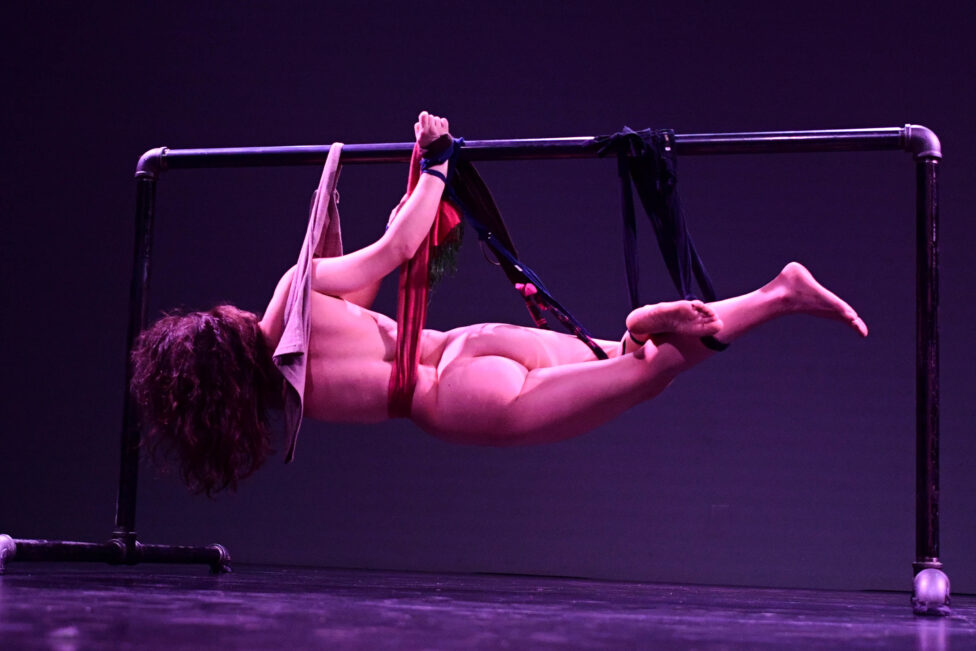
Suspended, photo by Jim Coleman
AF: I have always noticed, in dance and acting, that men have more freedom on stage. I’m not sure if it’s true, but it’s a feeling I have. Watching men dance and say “Holy Fuck!” There is a detachment. Women are so castrated, so repressed from so many things. When Nina was saying that we kind of impair ourselves in order to protect ourselves, I thought about how many times I was about to leave the house saying “well, I really like this outfit, but this skirt is too revealing, better not…” For fear of not feeling safe. And when I came here, even though here I feel much safer now. I don’t know about the statistics. I don’t know if it is really safer here than Brazil or not, but I have at least this feeling. Even having this feeling we recognize that our movements and our bodies are different and there is a desire to repress in order to not draw more attention. So my body gets stiff here. When I go back to Brazil I’m like, oh I can hug this person! I can approach someone I haven’t met or I’ve only just met and we talked for ten minutes or more and then I can hug them to say goodbye.
NM: I feel the opposite way. I went through a liberation here. When I say Kung Fu it’s actually Wing Tsun, but because of Wing Tsun, I learned about personal space. In order to do self defense you have to know what your boundary is, your space. The moment someone enters or invades that space, you attack. I didn’t have awareness about this personal space, and because of that, my personal space was very tiny. The personal space I authorized myself to have was very small and very close, almost touching my skin. And when I understood my personal space as a much bigger thing, I could expand into it. My movements expanded too as did my conception about what and where I am.
How to develop awareness about this physical abuse that is cultural, go beyond shame, victimization and dance freely? How does this abuse manifest itself in your artistic creation? And how to move beyond it as a subject for creation?
KR: Talk a little bit about a work you performed or a work you saw, present, past or future that you responded to artistically.
FC: So, here in Argentina we are doing a work with Flávia, since 2017, about the myth of sin, the myth of Adam and Eve. And we chose the fruit, the apple, to be the object that connects us and the people. That is an object that people will automatically associate to the fruit of sin. We are in the creation process, and I chose, now, for it to be on the street. We are doing a small showing here in a park near my home and I am addressing all these questions that we talked about here: what is the Brazilian body, the Brazilian dance body, the body that serpentines from the waist down? We are teaching girls, that are all from here, one from Uruguay, to dance Brazilian dances. To see how their bodies receive Brazilian dance as a way to continue talking about this and understanding how my body elaborates this guilt. Motherhood also made me find my body a lot. I understood that I felt so much guilt, so much, so much, for everything. That’s why I’m working with the story about the apple. So, to answer your question, I say we are sublimating, finding a way to make a kind of a therapy, creating a show only with women, there are seven of us, six dancing and I’m directing it. It’s called Manzana [Apple]. We will be able to answer this question in a little while.
FT: There is something interesting, to what Bia said about how to move forward and how to move this body, with this issue of victimization. First of all, leaving Brazil was a 360-degree turn for me in terms of the awareness of abuse. It was perverse the environments I moved around in, and especially I wondered, what do I create affect towards, what did I internalize? It was very important to purge myself and get mad, give myself permission to feel things that I, until then, wasn’t aware of. Even though it hurt a lot, I sought this kind of abusive place because it is internalized, because it is what you recognize as familiar, because in some way, this distorted love or this distorted look from another you learn is approval. There is something in you that wants it consciously or subconsciously. It’s that: I don’t want to be a “butt”, but how does it feel when I am not a “butt” to someone? Right? So this is a search and it is a work of a very deep deconstruction, daily, that is very painful too. This is structural. And it’s also manifesting itself all the time because our body is manifesting its particular history the whole time. Beyond this project with Bia, there is this other solo I’m working on. Although the subject matter is about a bipolar body, speaking in a very superficial way, I ended up working with many polarities. I used Samba as a metaphor to talk about euphoria and depression, contraction and expansion of a body, the ugly and the beautiful. How to dwell in this place of wanting to expand, wanting to have freedom with my body, but not wanting this freedom to be interpreted in certain ways. How do I control how this will arrive and then how do I appropriate and validate my own movement? This question generates many questions, so I don’t know how to close it.
AF: My solo work is also about the freedom of creation and it refers to the other question of finding my voice. The empowerment of the I, the artistic voice, of movement, of sound. I think it was there. I’m lying! I forgot about this piece, completely! I did a performance work, pre “#MeToo”, called Yes, All Women. I covered myself with different caution tapes, police line, don’t cross, crime scene, that kind of thing, and I stayed lying down for hours on top of a bunch of trash bags. I just lay there for hours with people passing by on the street. It was very interesting to hear people’s reaction saying, “Well, she is almost naked, what do you expect?” and hear parents passing with their daughters trying to explain what that meant and what the work was talking about. I didn’t know her age because I had tape on my eye, I was able to see just a little bit in order to be safe. Performance is crazy, especially street performance. When the person doesn’t see your eyes they don’t know if you can see them, it’s a different relationship. It’s crazy. Especially because there is the thing of a naked body. But I’m not naked, there is no genitalia showing, no breasts showing, nothing like that, but you can see under the tape there is nothing, so people think it’s a naked body. That in fact is not naked.
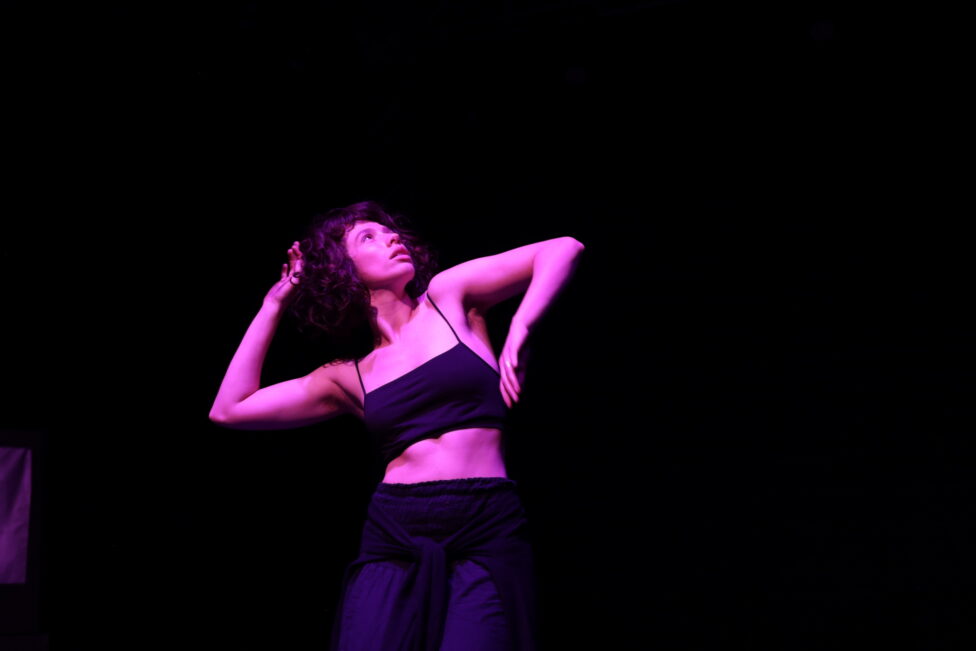
photo by Nina Marqueti
NM: I’m in a moment of my artistic making where I still haven’t gotten to the point of “after.” After you explore this experience you had, our women’s perception, being a victim of a sexual crime, or from patriarchy that are these mini daily violences. I’m still not in moment of ok, I put this aside and where are we going now? Especially the need I have, I had, in both times I performed The Matriarch’s Flower. It’s incredible how, after the show, someone came and said “Wow, I need to talk to you, the same thing happened to me, let’s talk about it…” And that made me calm to know that the play delivered what I intended to deliver. It created an openness to speak about these things, at the same time it gives me an anxiety where I want to do more, I want to show more, I want to take it to cities where no one talks about this… Smaller parts of the country, here or Brazil. I want to reach other people who can’t find space to speak about this. Where they see the show and can feel this openness too. I’m still in the process of exploring this, and it has been very liberating for me. Both my process with Wing Tsun and my process with the show, have been a cure and a liberation to many things.
KR: Flávia was saying earlier exactly how I feel about how not to be. This deconstruction about creation is not putting something aside. It’s not on the side. It isn’t simply, now we go beyond that. It’s already the body reestablishing a place of identity or of belonging. This is the research place. It oscillates between this place of feminine “Brazility,” but it can also have fluidity in gender too. This dialog of I don’t want to be a woman, I don’t want to be what is expected of a woman in many places, in my country, in my hometown. I want to have the non-binary option, I don’t want it the way it’s perscribed to me. The deconstruction has to be very deep. We can talk about this forever, so… Thank you. We would like to thank Ethan for the space, so Nina, you can say the name of the space so we don’t forget.
NM – The name of the space is Brooklyn Wing Tsun, here in Park Slope.

